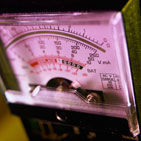
802.11ac Standards and MIMO Technology to Drive Global RF Test Equipment Market
Company News Thursday, April 25, 2013: Frost & Sullivan
LONDON – 25 April, 2013 – The deployment of progressively more complex telecommunication techniques, including 802.11ac, together with the adoption of advanced multiple-input, multiple-output (MIMO) technologies will fuel the global radio frequency (RF) testing market.
New analysis from Frost & Sullivan (http://www.testandmeasurement.frost.com), Global RF Testing Market: Increasing Complexity of Products Translate into Growth Opportunities for Test Vendors, finds that the market earned revenues of $3.02 billion in 2011 and estimates this to reach $4.20 billion in 2016. The research covers traditional general purpose (GP) instrumentation, modular GP instrumentation, semiconductor automatic test equipment (ATE), and rental GP segments.
802.11ac is one of the key drivers for the RF test equipment market. With the 802.11ac standard, faster speed and higher data handling capacity through wider channels than the existing systems are achieved.
“The existing 802.11 protocol devices have managed to satisfy network requirements over the past decade,”noted Frost & Sullivan Measurement & Instrumentation Industry Analyst Prathima Bommakanti. “However, with the increasing consumption of digital data, mobile data traffic needs to be handled with more powerful wireless network infrastructure that would offer more capacity, reliability, and speed.”
Research indicates that with the 802.11ac standard, the usage of 8x8 MIMO to support 160 MHz bandwidth and that with LTE advanced, the usage of 8X8 MIMO to support 100 MHZ channel bandwidth, is becoming popular. The widening adoption of MIMO will, therefore, also boost market prospects.
While the overall market is poised to expand, modular RF test equipment is expected to compete with traditional GP and semiconductor ATE in a growing number of applications. This is due to its ease-of-use, scalability and ability to support lower test costs.
As competition intensifies, scalability is seen as one of the key parameters in selecting or short listing a test vendor. In addition, brand name plays an important role in winning RF test equipment deals. These factors pose a challenge to smaller vendors in an already competitive market.
“To leverage the market’s growth potential, companies need to develop a strong focus on customer relationship management, price-performance and product innovation,” concluded Bommakanti.
If you are interested in more information on this research, please send an email to Julia Nikishkina, Corporate Communications, at julia.nikishkina@frost.com, with your full name, company name, job title, telephone number, company email address, company website, city, state and country.
Global RF Testing Market: Increasing Complexity of Products Translate into Growth Opportunities for Test Vendors is part of the Test & Measurement Growth Partnership Service programme. Frost & Sullivan’s related research services include: High Growth Testing Opportunity: Ethernet Test Equipment Market, European Calibration Services Market, North American Calibration Services Market, and Indian General Purpose Test Equipment Market. All research services included in subscriptions provide detailed market opportunities and industry trends evaluated following extensive interviews with market participants.
